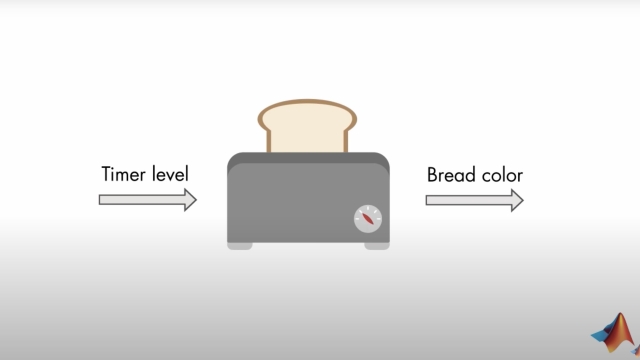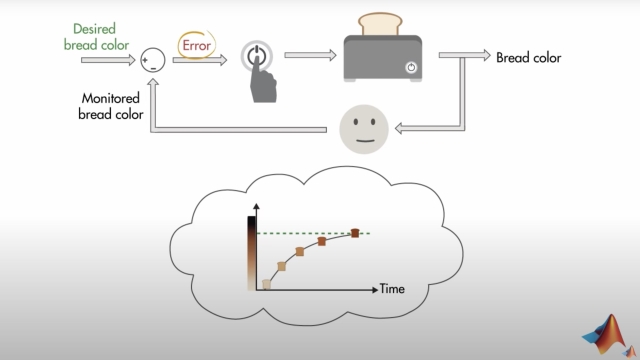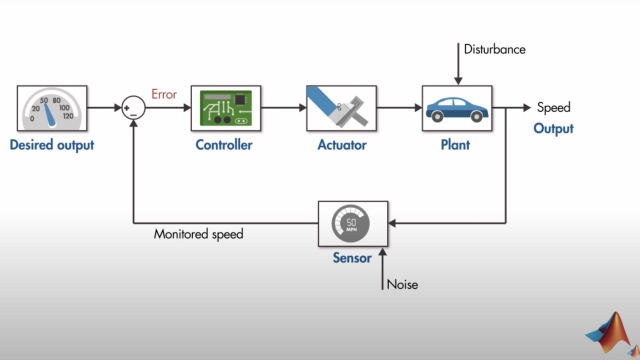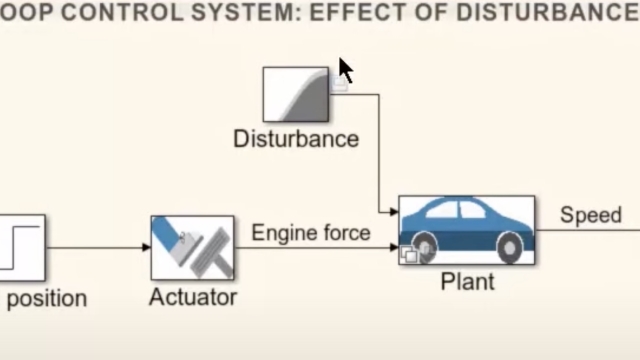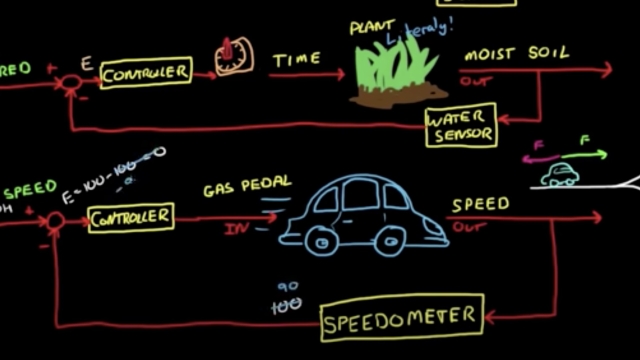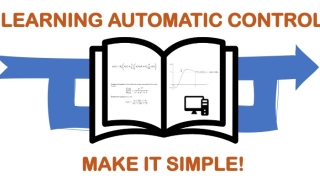
Understanding the basic ideas of control systems is fundamental before starting to work in control theory.
This is specially important for short courses, where only a few teaching hours are available.
With the aim to help in this task, this journey provides a collection of short videos to introduce and motivate the idea of automatic control in a very intuitive way:
- First, a collection of 4 different videos developed by Mathworks Inc. are presented, which includes nice examples to understand open-loop systems, control systems, components of a control system, and the concept of disturbances.
- Then, a fifth video created by Brian Douglas is provided as a visual summary of all the previous concepts by following daily examples: dishwasher, irrigation system, and car cruise control.
Hope you enjoy this journey and get the basic understanding of the fascinating automatic control field!
Let's start understanding how systems work on their on. This is known as open-loop behaviour in the terminology of the automatic control field. It is very important to know how the systems or devices work before modifying their behaviour to make them automatic.
In this first resource, we will learn how open-loop systems are found in everyday appliances like toasters or showers, and discover how they can be tuned by trial-and-error to achieve a desired output.
Understanding Control Systems: Open-Loop Control Systems
This video explores open-loop control systems by walking through some introductory examples.
Learn how open-loop systems are found in everyday appliances like toasters or showers, and...
See MoreOnce the concept of open-loop systems is understood from the previous resource, the basic idea of control systems is introduced in this video. The core of any control system and the automatic control field is feedback.
The feedback concept is really straightforward to understand, since it is something intrinsic in our natural behaviour. Every day, in any moment, we have an objective to do, and we act and proceed to do it. It works in the following way: we fix an objective (for instance, prepare a toast in the morning for breakfast with a desired toasted level), then we observe the current status of that objective (the toasted status of the toast), we see or feed back the information to us about how far we are from the objective (how close the toast is from our desired toasted level), and we act to reach that objective in the manner we would like to (we switch off the toaster if the toast is ready, or we repeat the toaster time again to continue toasting).
This resource provides a nice video to understand the feedback concept thought two examples: the toaster and the temperature regulation in a shower.
Understanding Control Systems: Feedback Control Systems
This video provides introductory examples to learn about the basics of feedback control (closed-loop control) systems.
Learn how feedback control is used to automate processes and discover...
See MoreOnce the idea of feedback control systems is understood from the previous resource, it is important to know which are the elements interacting in a control scheme.
To continue this journey, this resource provides a video to learn about the different components of a feedback control systems and their interaction using the cruise car control as a guide example.
Understanding Control Systems: Components of a Feedback Control System
This video introduces the components of a feedback control system and how they interact with each other.
Learn basic terminology by walking through examples that include driving a car...
See MoreAt this stage of the journey, we have all the basic knowledge about control systems! During this trip, we realized that in any control systems, there are external signals affecting our objectives in the control problem. Those signals are called disturbances.
This resource introduces the concept of disturbances using the cruise control problem presented in the previous item. We will understand the effect of the disturbance on the process, and how the control system can contribute to mitigate its effect.
Understanding Control Systems: The Disturbance Rejection Problem
This video provides a demonstration using a car to show how you can simulate open- and closed-loop systems in Simulink®.
First, you will learn how to model and tune open-loop systems. The...
See MoreSo, if you have reached this step of the journey, you already got the basic knowledge! Congratulations!
For the last stop of this journey, here you can have a nice overview of control systems which summarized all the previous concepts in just a single video. For that, examples like a dishwasher machine, a plant irrigation system, and the cruise control problem are presented.
Understanding Closed-Loop Control
This lecture discusses the differences between open loop and closed loop control in a very easy and intuitive way. Daily examples, like a dishwasher, plant irrigation, and car speed systems...
See More
